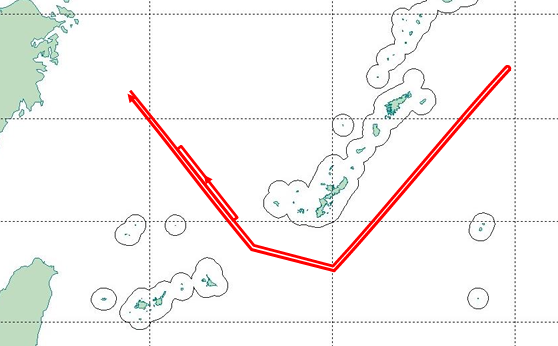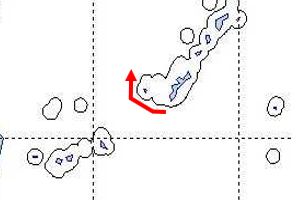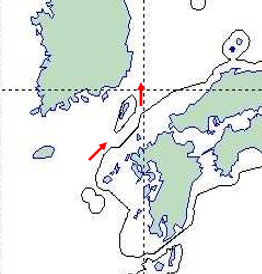Vol. 17, March 16, 2025
What is happening in East Asian Maritime Security? The Research Institute for Peace and Security (RIPS) publishes the biweekly newsletter, “East Asian Maritime Security (EAMS)” and updates the information
on maritime security relevant to East Asia and Japan's territory.
|
|
Statistical Data and Analysis
(as of March 14)
|
|
|
|
|
Chinese and Russian military activities in the waters and airspace around Japan remain busy.
Chinese UAVs have been recently observed to fly northwards over the Pacific Ocean after passing the area between the main island of Okinawa
and Miyakojima Island, not only to Okinawa Prefecture but also to the offshore areas of islands belonging to Kagoshima Prefecture. It remains to be seen what the purpose of these provocative flight patterns is and whether they will become norm in the future.
Russian intelligence-gathering vessels continue to navigate around Japan, particularly in Japan's contiguous waters. It is necessary to keep
a close watch on how long these harassing practices will continue and what their objectives are.
[Statistical Data as of March13]
|
|
Japan Coast Guard (JCG) daily updates the statistical data on the number of China Coast Guard vessels entering in the contiguous zone around the Senkaku Islands
and intruding into Japanese territorial waters. The below is from the website of JCG.
(https://www.kaiho.mlit.go.jp/mission/senkaku/senkaku.html)
|
Feb.
|
Contiguous zone
|
Territorial
sea
|
Mar.
|
Contiguous zone
|
Territorial
sea
|
|
28
|
4
|
|
7
|
4
|
|
|
Mar.
|
|
|
8
|
4
|
|
|
1
|
4
|
|
9
|
4
|
|
|
2
|
4
|
|
10
|
4
|
|
|
3
|
6
|
|
11
|
4
|
|
|
4
|
4
|
|
12
|
4
|
|
|
5
|
4
|
|
13
|
4
|
|
|
6
|
4
|
|
14
|
|
|
|
|
|
|
|
|
|
|
|
Date
|
Topics
|
|
2/28
|
Japan Joint Staff confirmed one Chinese TB-001 reconnaissance / attack UAV flying from East China Sea to the Pacific Ocean through the area between the main island
of Okinawa and Miyakojima Island on February 28. This UAV flew from the area south off the main island of Okinawa to the area off Amami-Oshima Island, then turned and flew back to East China Sea through the same area. Japan
Air Self-Defense Force (JASDF) scrambled to this UAV.

(Source: Japan Joint Staff)
________________________________________
Japan Joint Staff
https://www.mod.go.jp/js/pdf/2025/p20250228_01.pdf
|
|
3/01
|
A Japanese Maritime Self-Defense Force destroyer has sailed through the Taiwan Strait for the second time.
Sources with knowledge of the matter say the destroyer Akizuki passed through the strait from north to south in early February.
The United States and others claim the Taiwan Strait is in international waters and is open to all naval vessels. China has protested every time a Western warship passed through the area.
The transit by a Japanese destroyer is apparently aimed at underscoring freedom of navigation. A Maritime Self-Defense Force destroyer sailed through the strait for the first time in September
last year
________________________________________
NHK World (English)
https://www3.nhk.or.jp/nhkworld/en/news/20250301_07/index.html
.
|
|
3/03
|
Japan Maritime Self-Defense Force (JMSDF) has confirmed one Chinese Dongdiao class Intelligence ship (hull number 795) sailing west in the waters 140km northeast of Cape Sata-Misaki (Kagoshima
Prefecture) on February 28. This vessel crossed the Osumi Strait and navigated to the East China Sea.
Then, on March 3, JMSDF has also confirmed this vessel sailing southeast in the waters between the main island of Okinawa and Miyakojima Island to the Pacific Ocean.

(Source: Japan Joint Staff)
________________________________________
Japan Joint Staff
https://www.mod.go.jp/js/pdf/2025/p20250303_01.pdf
|
|
3/05
|
When announcing its response to Chinese Coast Guard vessels in the vicinity of the Senkaku Islands, Japan Coast Guard has previously used the expression “(Chinese Coast Guard vessel are) carrying
what appears to be guns” in its press releases. However, from 5 March, Japan Coast Guard will clearly state as “(Chinese Coast Guard vessel are) carrying guns’ in its press releases. This means that the expression has been changed in line with the actual situation,
based on several published information, including official announcements by the Chinese side.
________________________________________
Yomiuri Shimbun
https://www.yomiuri.co.jp/national/20250305-OYT1T50053/
|
|
3/05
|
JMSDF confirmed one Russian naval vessel, Vishnya class intelligence ship (hull number 535), sailing west 80 km southwest of the main island of Okinawa on March 4. Then JMSDF confirmed this
vessel cruising in Japanese contiguous zone southwest of the main island of Okinawa and west of Torishima Island (Okinawa Prefecture), and going out of Japanese contiguous zone west of Torishima Island (Okinawa Prefecture) to East China Sea.

(Source: Japan Joint Staff)
________________________________________
Japan Joint Staff
https://www.mod.go.jp/js/pdf/2025/p20250305_01.pdf
|
|
3/07
|
Japan Maritime Self-Defense Force (JMSDF)) confirmed one Russian naval vessel, Vishnya class intelligence ship (hull number 535), sailing northeast 120 km southwest of Tsusima Islands (Nagasaki
Prefecture) on March 6. Then JMSDF confirmed this vessel sailing northeast to the Sea of Japan through the Tsusima Strait from March 6 to 7.

(Source: Japan Joint Staff)
________________________________________
Japan Joint Staff
https://www.mod.go.jp/js/pdf/2025/p20250307_01.pdf
|
|
3/07
|
MANILA, Philippines — The country’s historical body (NHCP) on Friday denounced the false claim circulating in Chinese social media Rednote that the island of Palawan once belonged to China.
A post from Rednote falsely claimed that the province was once a Chinese territory and that it had governed it for about a millennium, the National Historical Commission of the Philippines
(NHCP) said. The post even stated that the Philippines should return Palawan to China, claiming that its original name was “Zheng He Island” after the famous 14th century Chinese explorer.
“The historical fact clearly and convincingly shows that the Philippines and its predecessor state actors have always exercised sovereignty
over our archipelago and over Palawan in particular,” the NHCP said in a statement. “No other state contests this fact,” the commission stressed. “Not one.”
NHCP also noted that there exists no evidence to support the settlement of a permanent Chinese population in Palawan which has been continuously populated since 50,000 years ago through archeological
data.
Even if the post claims were to be true, the commission stressed that “exploration does not equate to sovereign ownership.”
“Neither does vassalage by a predecessor nation equate to sovereign rule in the present day,” the NHCP said.
Likewise, NHCP said early Filipino polities nationwide were, at one point or another, closely connected to sultanates and rajahnates in other parts of Southeast Asia. “However, our neighbors
do not claim sovereignty over Philippine territory over baseless and inaccessible historical fiction,” it said.
Such outright false claims were made amid the rising tensions between Manila and Beijing in the West Philippine Sea, the body of water inside of the country’s exclusive economic zone west
of Palawan. Beijing asserts sovereignty in almost the entire South China Sea, including most of the West Philippine Sea. In 2012, Manila and Beijing had a tense standoff over Panatag Shoal, with the former withdrawing its ships from the shoal that led to the
latter having an effective control of its lagoon to date. A year later, Manila lodged an arbitration case against Beijing after this standoff which led to a historic 2016 arbitral award that effectively rejected the latter’s sweeping claims in the West Philippine
Sea through its nine-dash line, now ten-dash-line after the inclusion of another line in the eastern section of Taiwan in 2023.
“The Chinese state has flip-flopped on its claims that culminated in the infamous Nine-Dash Line which was soundly declared illegal,” the
NHCP noted.
It included in its baseless ten-dash-line the areas of Kalayaan Island Group, where the Kalayaan municipality of Palawan is located.
“Palawan is and will always be Filipino,” the NHCP said.
________________________________________
Philippine Daily Inquirer (English)
https://www.inquirer.net/430724/palawan-was-never-part-of-china-nhcp/
|
|
3/09
|
A spokesperson for China's military has officially acknowledged that its activity around Taiwan has become the norm.
State-run China Central Television quoted Wu Qian, spokesperson for the delegation of the People's Liberation Army, as noting that Taiwan's ruling Democratic Progressive Party has been stepping
up its separatist provocations.
He reportedly said the DPP is under the delusions of relying on the United States to seek Taiwan's independence and using force to resist unification.
Wu was also quoted as saying the issue of Taiwan is an internal affair of China and no external interference will be tolerated.
The remark is seen as an attempt to keep the US in check, as Washington continues to provide military assistance to Taiwan, including arms sales.
Wu pledged that the Chinese military will counter separatism, and said its patrols around Taiwan and "military deterrence have become the norm."
Wu made the remarks during the annual session of the National People's Congress in Beijing. They signal a stronger stance to further step up pressure on the administration of Taiwan's President
Lai Ching-te, who leads the DPP.
Daily updates from Taiwan's defense ministry show Chinese military aircraft and vessels have been increasingly active around Taiwan in recent years.
Experts have pointed out that such activities may have become the norm.
________________________________________
NHK World (English)
https://www3.nhk.or.jp/nhkworld/en/news/20250309_14/index.html
|
|
3/10
|
Japan's National Museum of Territory and Sovereignty is set to reopen in mid-April after renovation.
The government will update the museum's displays for the Northern Territories, or the four Russian-controlled northeastern Pacific islands, and the Senkaku Islands in the East China Sea to
experience-based types using advanced visual technologies, with an aim to encourage young people, many of whom are believed to be indifferent to territorial issues, to take an interest in them.
The Russian-held islands, located off Japan's northernmost prefecture of Hokkaido, have long been claimed by Japan, while China claims sovereignty over the Japanese-administered Senkaku Islands
in Okinawa Prefecture, southernmost Japan. The museum in Tokyo's Chiyoda Ward is designed to publicize Japan's position on disputed territories.
The government opened the museum in 2018 to promote public understanding of these disputed islands as an inherent part of Japan's territory. The museum has mainly used panels to showcase the
histories and natural environment of the islands.
Some 10,000 people visit the museum each year, with many being middle-aged and older individuals interested in territorial issues. Attracting younger generations to the museum has been a challenge
for the government.
________________________________________
JIJI Press News (English)
https://sp.m.jiji.com/english/show/38779
|
|
3/12
|
On 12 November, Japan Prime Minister Shigeru Ishiba met with the winners of the high school speech contest on the Northern Territories issue at the Prime Minister's Office. The Prime Minister
stressed that the territory is the most important part of national sovereignty, so it is important to deepen public interest and understanding. Referring to Russia's invasion of Ukraine, he expressed his willingness to work on the suspended territorial negotiations,
saying “We are not in a situation where we can negotiate now, but we will work on it without giving up”.
________________________________________
JIJI Press News (Japanese)
https://sp.m.jiji.com/article/show/3468199
|
|
3/12
|
Monthly Statistics on Scrambles(February)
Japan Joint Staff released its monthly statistics on scrambles. In February, Japan Air Self Defense Force (JASDF) conducted 73 scrambles. The most scrambles are against Chinese aircrafts
(59 times; the rest were against Russian aircrafts).
(Source: Japan Joint Staff)
________________________________________
Japan Joint Staff
https://www.mod.go.jp/js/pdf/2025/p20250312_01.pdf
|
|
3/14
|
Press Release by Japan Ministry of Foreign Affairs
G7 Foreign Ministers’ Meeting in Charlevoix (excerpt)
On March 13, commencing at 4:55 p.m. (5:55 a.m. on March 14, Japan Time) for approximately 25 minutes, Mr. IWAYA Takeshi, Minister for Foreign Affairs of Japan, who is visiting Charlevoix,
Canada to attend the G7 Foreign Ministers' Meeting, participated in the G7 session on Maritime Security and Prosperity. The overview is as follows (the session was attended by the Foreign Ministers of the G7 countries and the High Representative of the European
Union for Foreign Affairs and Security Policy).
In this session, the G7 ministers exchanged views on Maritime Security and Prosperity.
The G7 countries reaffirmed the importance of maintaining and strengthening maritime security for the stability and economic resilience of the international community. The welcomed Canada's
recent initiative focusing on maritime security.
Minister Iwaya introduced Japan's vision of a Free and Open Indo-Pacific (FOIP), which aims to bring stability and prosperity to all countries in the Indo-Pacific region, without distinction,
by maintaining and strengthening a free and open maritime order based on the rule of law.
Minister Iwaya then pointed out that in maritime security and prosperity, compliance with relevant international law, including the UN Convention on the Law of the Sea (UNCLOS), and strengthening
maritime law enforcement capabilities are important, and stated that Japan would like to work on maritime security in cooperation with the G7 and other like-minded countries.
________________________________________
Ministry of Foreign Affairs
https://www.mofa.go.jp/fp/pc/pageite_000001_00847.html
|
|
|
|


 MENU
MENU
 閉じる
閉じる